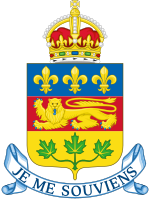
The Province of Canada was a British colony in British North America from 1841 to 1867. Its formation reflected recommendations made by John Lambton, 1st Earl of Durham, in the Report on the Affairs of British North America following the Rebellions of 1837–1838.

Robert Baldwin was an Upper Canadian lawyer and politician who with his political partner Louis-Hippolyte Lafontaine of Lower Canada, led the first responsible government ministry in the Province of Canada. "Responsible Government" marked the province's democratic self-government, without a revolution, although not without violence. This achievement also included the introduction of municipal government, the introduction of a modern legal system and the Canadian jury system, and the abolishing of imprisonment for debt. Baldwin is also noted for feuding with the Orange Order and other fraternal societies. The Lafontaine-Baldwin government enacted the Rebellion Losses Bill to compensate Lower Canadians for damages suffered during the Lower Canada Rebellion of 1837–1838. The passage of the Bill outraged Anglo-Canadian Tories in Montreal, resulting in the burning of the Parliament Buildings in Montreal in 1849.

Canada East was the northeastern portion of the United Province of Canada. Lord Durham's Report investigating the causes of the Upper and Lower Canada Rebellions recommended merging those two colonies. The new colony, known as the Province of Canada, was created by the Act of Union 1840 passed by the Parliament of the United Kingdom, having effect in 1841. For administrative purposes, the new Province was subdivided into Canada West and Canada East. The former name of "Lower Canada" came back into official use in 1849, and as of the Canadian Confederation of 1867 it formed the newly created province of Quebec.

Sir George-Étienne Cartier, 1st Baronet, was a Canadian statesman and Father of Confederation. The English spelling of the name—George, instead of Georges, the usual French spelling—is explained by his having been named in honour of King George III.
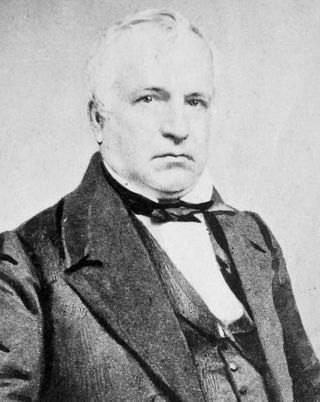
Sir Louis-Hippolyte MénardditLa Fontaine, 1st Baronet, KCMG was a Canadian politician who served as the first Premier of the United Province of Canada and the first head of a responsible government in Canada. He was born in Boucherville, Lower Canada in 1807. A jurist and statesman, La Fontaine was first elected to the Legislative Assembly of Lower Canada in 1830. He was a supporter of Papineau and member of the Parti canadien. After the severe consequences of the Rebellions of 1837 against the British authorities, he advocated political reforms within the new Union regime of 1841.

Sir Étienne-Paschal Taché was a Canadien doctor, politician, and Father of Confederation. His family had a long history in New France, but suffered serious financial reverses due to the Seven Years' War and the siege of Quebec. He was considered a self-made man, who became a physician, a militia soldier, and a politician. He served twice as joint premier of the Province of Canada.

The British North America Act, 1840, also known as the Act of Union 1840, was approved by Parliament in July 1840 and proclaimed February 10, 1841, in Montreal. It abolished the legislatures of Lower Canada and Upper Canada and established a new political entity, the Province of Canada to replace them.

The Rebellion Losses Bill was a controversial law enacted by the legislature of the Province of Canada in 1849. Its passage and subsequent royal assent by the Governor General, James Bruce, 8th Earl of Elgin makes the bill a landmark piece of legislation in Canadian political history.
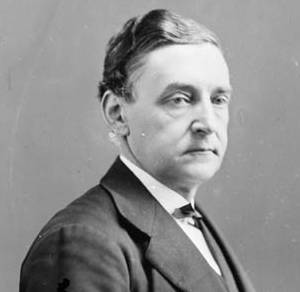
Sir Antoine-Aimé Dorion was a French Canadian politician and jurist.

Augustin-Norbert Morin was a Canadien journalist, lawyer, politician, and rebel in Lower Canada. He was a member of the Legislative Assembly of Lower Canada in the 1830s, as a leading member of the Parti patriote. Although he participated in the Lower Canada Rebellion, the British authorities concluded his conduct did not warrant a charge of high treason. After the Rebellion, he entered politics in the Province of Canada, eventually becoming joint premier of the Province. Retiring from politics due to health concerns, Morin was appointed to the bench. He was one of the commissioners who codified the law of Lower Canada, producing the Civil Code of Lower Canada which stayed in force for over a century.
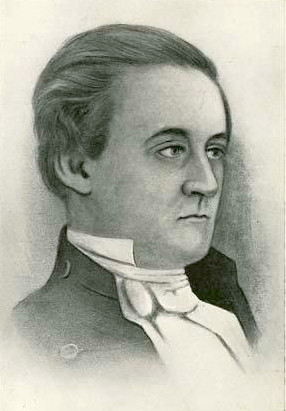
Lewis Thomas Drummond was a lawyer, political figure, and judge in Lower Canada.
Louis Lacoste was a notary and political figure in Lower Canada and then Canada East, Province of Canada. He was a member of the Legislative Assembly of Lower Canada, supporting Louis-Joseph Papineau and the Parti patriote. During the Lower Canada Rebellion he was imprisoned without trial, for his activities in the lead-up to the Rebellion. Following the creation of the Province of Canada, he was a member of the new Legislative Assembly for several years, and then a member of the Legislative Council. He was one of the original members of the Senate of Canada from 1867 to 1878.
Thomas Boutillier was a doctor, Patriote, and politician in Lower Canada. Elected to the Legislative Assembly of Lower Canada in 1834, he was a member of the Parti patriote led by Louis-Joseph Papineau, which was challenging the British colonial government of the largely French-speaking province of Lower Canada. When the Lower Canada Rebellion broke out in 1837, he fought on the Patriote side in the Battle of Saint-Charles. Following the Patriotes' defeat, he fled to the United States. He returned to Lower Canada in 1838.
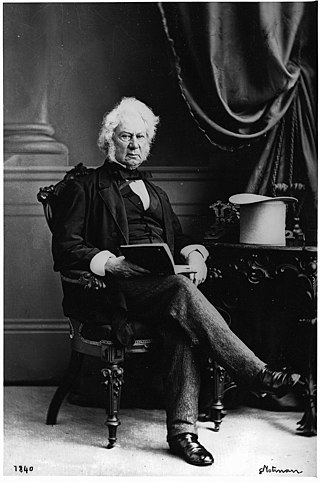
Benjamin Holmes was a Lower Canada businessman and political figure. He served in the militia of Lower Canada during the War of 1812, including a period of captivity by the American forces. He joined the Bank of Montreal shortly after it formed in 1817, and rose to be the cashier by 1827. He was twice a member of the Legislative Assembly of the Province of Canada. In spite of his service in the War of 1812, he was a supporter of annexation by the United States in the late 1840s, and a signatory of the Montreal Annexation Manifesto. He became a vice-president of the Grand Trunk Railway, and also a director of the Bank of Montreal.
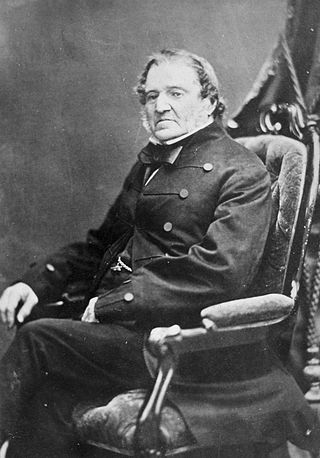
Frédéric-Auguste Quesnel,, was a lawyer, businessman and politician in Lower Canada. He was a member of the Legislative Assembly and the Executive Council of Lower Canada. Following the union of the Canadas, he was elected to the Legislative Assembly of the Province of Canada and later was appointed to the Legislative Council. Throughout his career he was a political moderate, seeking greater political power for French-Canadians under British rule, but also supporting the British connection generally. Condemned by the Patriotes as a vendu ("sell-out") in the Lower Canada Rebellion, in 1860 he was elected President of the Saint-Jean-Baptiste Society of Montreal.
René-Joseph Kimber was a physician and political figure in Lower Canada and Canada East, in the Province of Canada. He represented Trois-Rivières in the Legislative Assembly of Lower Canada, as a member of the Parti patriote, although he opposed the use of force in the Lower Canada Rebellion. After the creation of the Province of Canada, which he opposed, he was the member for the district of Champlain in the Legislative Assembly of the Province of Canada. He was briefly a member of the Legislative Council, prior to his death in 1843.
David Morrison Armstrong was a merchant, insurance agent and political figure in Canada East in the Province of Canada. He represented the electoral district of Berthier in the Legislative Assembly of the Province of Canada from 1841 to 1851. From 1855 to 1867 he sat in the Legislative Council of the Province of Canada, and in the Legislative Council of Quebec from 1867 until his death. He initially opposed the union of the Lower Canada and Upper Canada into the Province of Canada, and supported the reform movement for responsible government. After responsible government was achieved, he gradually became a Conservative.
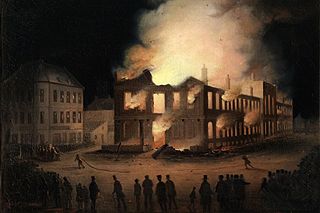
The burning of the Parliament Buildings in Montreal was an important event in pre-Confederation Canadian history and occurred on the night of April 25, 1849, in Montreal, the then-capital of the Province of Canada. It is considered a crucial moment in the development of the Canadian democratic tradition, largely as a consequence of how the matter was dealt with by then co-prime ministers of the united Province of Canada, Sir Louis-Hippolyte Lafontaine and Robert Baldwin.
Michael McCulloch was a physician and political figure in Canada East, Province of Canada. He represented the constituency of Terrebonne in the Legislative Assembly of the Province of Canada from 1841 to 1844, as a Tory and supporter of the British-appointed Governor General, Lord Sydenham.
Terrebonne was an electoral district of the Legislative Assembly of the Parliament of the Province of Canada, in Canada East. It was centred on the town of Terrebonne, immediately north-west of Montreal. It was created in 1841, based on the previous electoral district of the same name for the Legislative Assembly of Lower Canada.
